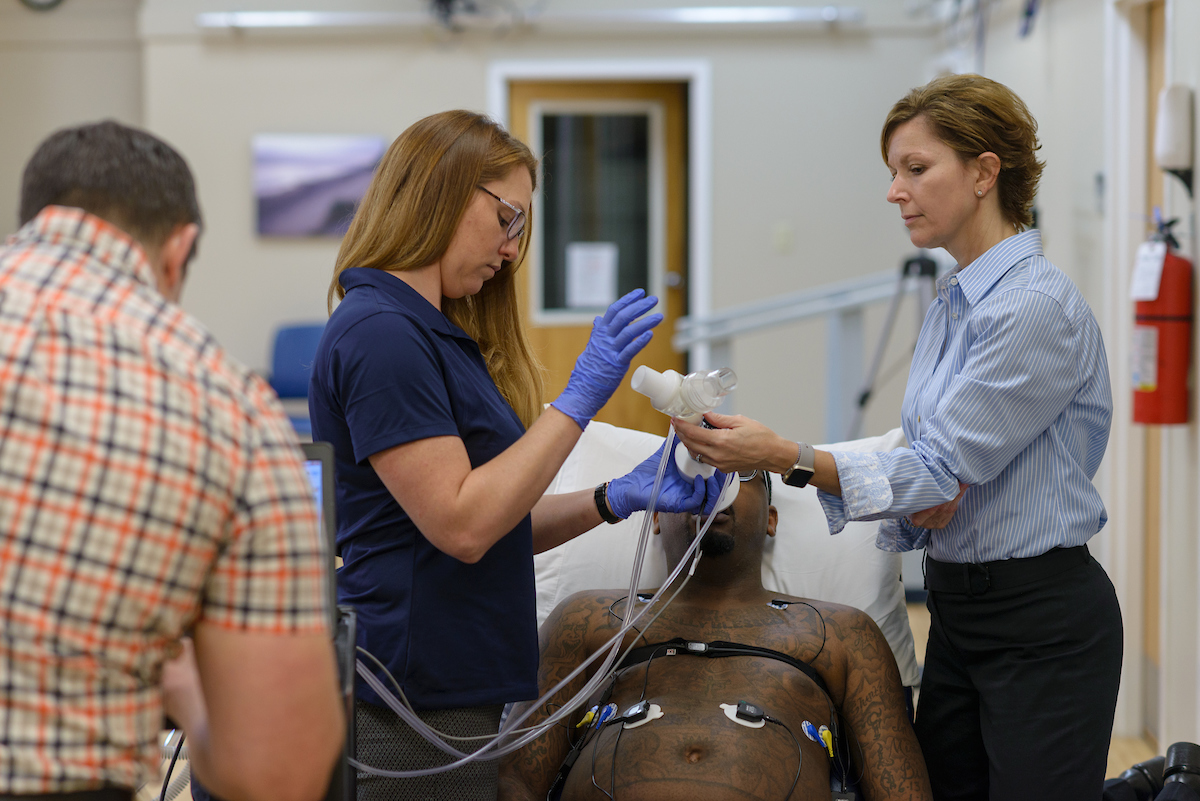Brooks Rehabilitation clinical researcher receives $3.6 million to study a novel breathing therapy for patients with spinal cord injury

Back to physical health resource hub
A novel treatment known as therapeutic acute intermittent hypoxia has shown promise for improving breathing among people living with chronic spinal cord injury. With the support of a four-year, $3.6 million U.S. Department of Defense grant, Brooks Rehabilitation and University of Florida researchers will investigate ways to optimize the intervention and gain a better understanding of which individuals will benefit most from the treatment. The study will be conducted at the Brooks Clinical Research Center in Jacksonville.
Respiratory problems are the leading cause of death among people living with spinal cord injury. The injury can disrupt neural pathways from the brain to respiratory motor neurons in the spinal cord, diminishing breathing capacity and airway defense.
In therapeutic acute intermittent hypoxia, participants are exposed to repetitive brief periods of low oxygen combined with small elevations in carbon dioxide. Typically, just 15 one-minute episodes are used, and most participants have difficulty distinguishing treatment from breathing room air. The intervention is expected to improve breathing capacity by promoting spinal neuroplasticity, the ability to strengthen pathways and neural connections that were spared from injury.
“We have had success in human trials with participants experiencing therapeutic benefit and no reports of adverse responses. We are really optimistic that this approach can improve health outcomes after spinal cord injury. However, next steps are needed to enhance the effectiveness of acute intermittent hypoxia,” said the study’s principal investigator Emily Fox, P.T., Ph.D., director of neuromuscular research at Brooks Rehabilitation, clinical research scientist of the Brooks/UF-PHHP Research Collaboration, and a research associate professor of physical therapy at the UF College of Public Health and Health Professions.
For the new study, Fox and her multi-disciplinary team, which includes co-principal investigator Gordon Mitchell, Ph.D., a UF professor of physical therapy and director of the UF Breathing Research and Therapeutics Center, or BREATHE, will investigate whether combining therapeutic acute intermittent hypoxia with a slight increase in carbon dioxide will enhance outcomes for patients with spinal cord injury. Their initial outcomes in uninjured individuals indicates neuroplasticity and diaphragm (the primary breathing muscle) activation are increased when this gas mixture is used. In a third aim, researchers seek to identify genetic biomarkers to predict which individuals benefit most, or least, from the intervention.
“I think this study is going to move us closer to an even more effective or potent treatment strategy and it will help uncover why some people don’t respond,” said Fox, also a BREATHE Center steering committee member. “That is critical so that we can identify patients who may need different treatment approaches.”
The study will enroll 62 individuals with chronic spinal cord injury to participate.
“Our hope is that by strengthening patients’ breathing we also increase their capacity for resilience, whether that is doing daily activities, such as getting dressed, or in illness, so that they will have more reserve to be able to face those challenges,” Fox said. “At the end of the day, acute intermittent hypoxia has the potential to make rehabilitation more effective and help the nervous system recover.”


